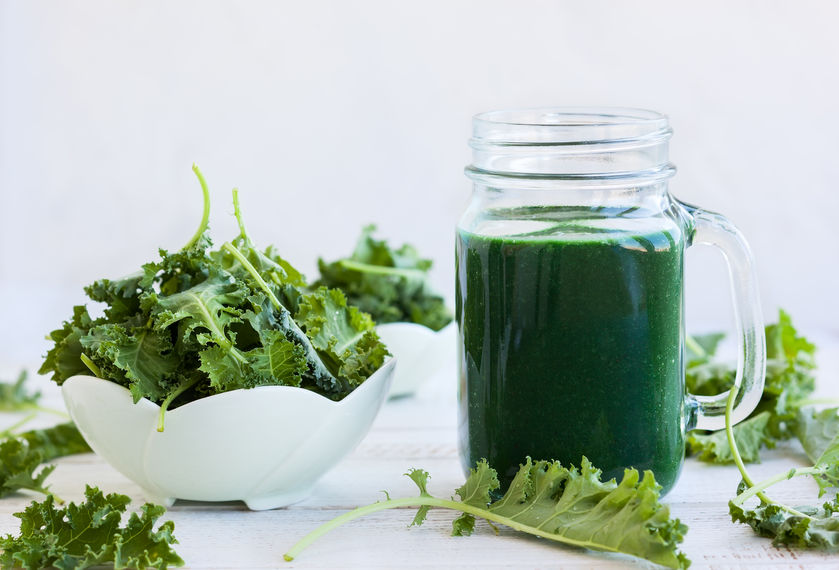10 Little Greens with Big Potential Health Benefits
In the last few years, Kale has become a household name, and on a stroll through any office, you’re likely to see at least one person munching on a bag of kale chips. Why should Kale receive all the praise?
All green, leafy vegetables are good for your health, but each of them offers a slightly different array of health benefits. Your best bet, for optimal health, is to consume a variety of leafy green vegetables and herbs.
Energy
Arugula – The B-complex vitamins in Arugula– riboflavin, vitamin B-6, niacin, thiamin, and pantothenic acid–aid metabolic function and help provide energy at the cellular level. Arugula leaves have a slightly peppery taste that pairs well with strawberries in salads. You can add also it to sandwiches, soups, and pasta dishes.
Lower Sodium Intake
Parsley – Parsley is an herb that you might not consider unless you are pushing the garnish around your plate, but it is a small herb with big potential. Parsley is loaded with Vitamins K, C and A, so it packs quite a large nutritive punch in a small package. Parsley is also a very flavorful addition to many foods, adding flavor without adding salt, allowing you to reduce your sodium intake without sacrificing flavor.
Nervous System Health
Swiss chard – Chard is part of the chenopod family that also includes beets and spinach. Chard stems have yellow or red betalain pigments that contain unique carotenoids, and some studies indicate that the phytonutrients in chard is also beneficial to the central nervous system.
Lower Blood Pressure
Endive/Escarole/Frisee – This family of leafy greens, distinguished by the shape of their leaves, are excellent braised as a side dish or added to soups and stews. They are rich in potassium, the mineral that assists in maintaining healthy blood pressure.
Protecting Sight
Beet Greens – Based on a 2000-calorie diet, beet greens pack in 220% of your daily vitamin A. Vitamin A encourages eye health and protects against macular degeneration. It may help prevent night blindness. Addiitonally, Vitamin A helps to strengthen the immune system through the production of white
Natural Diuretic
Dandelion – Dandelions are good for more than making wishes! Young, tender dandelion greens make a delicious salad. (And the flowers make a great dandelion wine too!) Every part of this often-pesky weed is edible. Dandelions historically were used as a diuretic and to purify the liver.
Lower Cholesterol
Collard Greens – Collards provide more calcium than a glass of milk, making them great for meat lovers and vegetarians alike. Therefore, they provide calcium without the potential health risks of the fats in dairy. Collard greens are part of the family with kale, mustard greens and Brussels sprouts that bind bile acids in the digestive tract. This binding makes it simpler for the body to excrete these bile acids, which are made of cholesterol. Eat a cupful of steamed collard greens to flush some cholesterol from your system naturally.
Full Body Detox
Mustard Greens – Avoiding toxins in our daily lives is near to impossible, which is why it is vitally important to support the systems in the detoxification systems in our bodies. Mustard greens supply antioxidants and glucosinates that help the body naturally eliminate and deal with the toxins we encounter.
Fertility & Reproductive Health
Fennel – Fennel contains natural estrogen, the hormone that regulates women’s reproductive cycles and fertility. Fennel, which possesses an anise/black licorice flavor, often is used in Mediterranean cooking. It is high in Vitamin C, which increases iron absorption when eaten with foods containing iron.
May Treat Alzheimer’s
Watercress – Watercress, often called cress, has been used for millennia as food and for healing. Watercress, which grows in streams or small, slow-moving bodies of water, is a real powerhouse herb. It has more vitamin C than oranges, more calcium than milk, and more iron than spinach. That is not watercress’ biggest claim to fame. Cress contains 312% of the recommended daily allowance of Vitamin K, making watercress great for the bone health while the Vitamin C fights off colds and infections and the iron prevent anemia. The Vitamin K in watercress decreases neuronal damage in the brain, thus helping fight Alzheimer’s disease.
You have enough things to worry about in a day without having to give too much thought to your health. Shake up your salad, stir some green goodness into your soups and stews, or spice up your morning smoothie. No matter which new green you try, your body will thank you.
 Interviewer Interview Prep
Interviewer Interview Prep Impactful Mentees
Impactful Mentees Benefits of a Mentor
Benefits of a Mentor Advice for First-Time Managers
Advice for First-Time Managers Overcoming the 18-month Itch
Overcoming the 18-month Itch Dressing for Your Style
Dressing for Your Style Interview Style Tips
Interview Style Tips Women's Stocking Stuffers
Women's Stocking Stuffers Gift the Busy Traveler
Gift the Busy Traveler Father’s Day Gift Guide
Father’s Day Gift Guide Airport Layover Activities
Airport Layover Activities Traveling & Eating Healthy
Traveling & Eating Healthy Travel Like a Boss Lady
Travel Like a Boss Lady The Dual California Life
The Dual California Life Gifts for Thanksgiving
Gifts for Thanksgiving Summer Reading List
Summer Reading List Top Leisurely Reads
Top Leisurely Reads New Year, New Books
New Year, New Books Life Lessons from a Sitcom
Life Lessons from a Sitcom Oprah, Amy or Amal?
Oprah, Amy or Amal?






